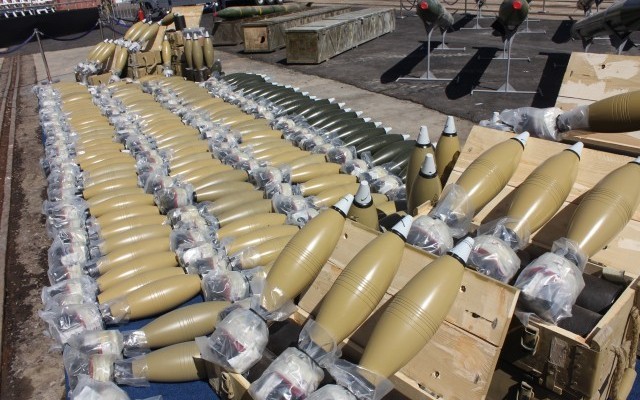On May 20, Netanyahu showed the German foreign minister an Iranian drone that was downed by the IDF as evidence that “the true backer of much of this aggression is Iran.”
By Sharon Wrobel, The Algemeiner
Senior leaders of the Gaza Strip-ruling Hamas terrorist organization and the Palestinian Islamic Jihad (PIJ) worked reportedly in close coordination with Iran’s Islamic Revolutionary Guard Corps (IRGC) and the Hezbollah to discuss military operations during the 11 days of fighting with Israel.
The editor-in-chief of the Lebanese daily Al-Akhbar, Ibrahim Al-Amin, said during an interview with Hezbollah-operated Al-Manar TV that the IRGC, Hezbollah and Hamas set up a joint military operations room in Beirut during the May hostilities in Israel and the Gaza Strip.
The channel’s report said that Al-Amin claimed “officers from Hezbollah, IRGC, and Hamas coordinated the military confrontation in Gaza” and “the Commander of IRGC’s Al-Quds Force, General Esmail Qaani, visited Lebanon twice to attend the chamber meetings.”
According to a May 27 analysis by the Meir Amit Intelligence and Terrorism Information Center, Qaani discussed the fighting between Israel and the Palestinians in a phone conversation with Hamas head Ismail Haniyeh.
The IRGC general praised the acts of “resistance” against the “Zionists” and emphasized Iran’s support for the Palestinians in light of the “aggression and crimes of the Zionist enemy in Jerusalem and Gaza.” Qa’ani also spoke to PIJ secretary general Ziad al-Nakhleh and stressed that Iran is standing by the Palestinians who are defending their land and their rights.
Al-Akhbar’s Al-Amin asserted that the Hezbollah sent weaponry and ammunition to Gaza and helped to move a number of “Palestinian Resistance officers” out of the battle zone during the conflict.
Additionally, the military hub in Beirut provided Palestinian factions with data about the movements of the Israeli military, while drones were used, Al-Amin claimed, to prevent an “ambush” by the “enemy” on Hamas fighters near the Gaza border.
Meanwhile, on May 20, Prime Minister Benjamin Netanyahu showed German Foreign Minister Heiko Maas during his visit to Israel an Iranian drone that had been downed by the Israel Defense Forces in the Beit Shean area, as evidence that “the true backer of much of this aggression is Iran.”
According to Netanyahu, “Iran sent an armed drone from Iraq or Syria,” which Israeli forces intercepted on the border between Israel and Jordan.
The analysis by the Meir Amit Intelligence and Terrorism Information Center also showed that senior Iranian officials have been keeping a close rapport with the leaders of Hamas and the PIJ to express support as the ceasefire with Israel came into effect on May 21.
At the end of the fighting, Qaani sent congratulating messages to head of Hamas’ military wing Mohammad Deif and to PIJ’s Commander of the military wing, Akram al-Ajouri and “proclaimed that through their unity and perseverance, they were able to destroy the pridefulness of the Israeli Army and proved that they are capable of inflicting heavy losses to it, making the enemy experience the taste of horror and defeat.”
Going forward, Qaani reaffirmed that Iran will continue its support for the Palestinians until the destruction of the “Zionist regime.” Others who congratulated Haniyeh for the Palestinians “victories” included Ali Akbar Velayati, a top adviser to Iran’s supreme leader, Ayatollah Ali Khamenei.
Hamas’ Haniyeh updated Khamenei on the fighting between Israel and the Palestinians and asked for support to rally the Muslim, Arab and international community to stop the “enemies of the Zionist enemy.”
Following the ceasefire, Khamenei issued a statement to the Palestinians in which he congratulated them for their “victory of the Zionist regime,” which he claimed “had to concede its defeat.”
The Iranian leader urged Muslim governments to provide the Palestinians with military and financial assistance and help them in rebuilding the infrastructure and destruction in Gaza. He warned that “preparation for the fight is ongoing” and that the decision when to start and end the conflicts lies with the Palestinian leadership.


